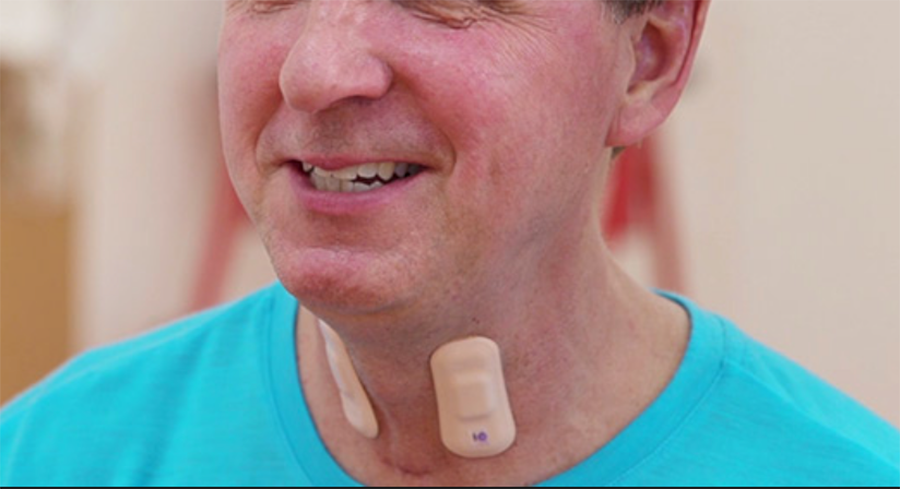Northwestern University researchers have developed a stretchable sensor that offer exciting possibilities in the rehabilitation of stroke patients. The sensors stick directly to the skin, moving with the body and provide detailed health metrics such as heart function, muscle activity and quality of sleep. The stretchable sensors were created in the lab of Northwestern University engineering professor John A. Rogers, in partnership with Shirley Ryan AbilityLab.
Related Myosuit: Wearable Device that Helps Myopathy or Stroke Patients Walk
“Stretchable electronics allow us to see what is going on inside patients’ bodies at a level traditional wearables simply cannot achieve,” Professor John Rogers said. “The key is to make them as integrated as possible with the human body.”
The innovative device, which can be worn on the throat, allows patients to be monitored both while they are hospitalized and after they go home, reports McCormic School of Engineering, Northwestern University.
The bandage-like throat sensor positioned on the throat’s suprasternal notch, measures patients’ swallowing ability and patterns of speech. The sensor can also aid in the diagnosis and treatment of aphasia, a communication disorder that results from damage or injury to language parts of the brain, and is more commonly seen in in older adults, especially those who have had a stroke.

Traditional tools used by speech-language pathologists to monitor patients’ speech function – such as microphones – cannot distinguish between patients’ voices and ambient noise.
“Our sensors solve that problem by measuring vibrations of the vocal cords,” Rogers said. “But they only work when worn directly on the throat, which is a very sensitive area of the skin. We developed novel materials for this sensor that bend and stretch with the body, minimizing discomfort to patients.”
Because the sensors are wireless, they don’t have drawbacks like the ones seen in traditional health monitoring devices in clinical settings. The sensor can be worn even after the patient leaves hospital, which allows doctors to monitor how the patient is coping in the real world.
Leora Cherney, a research scientist at the Shirley Ryan AbilityLab and an expert in aphasia treatment says communicating with family and friends at home falls in a totally different dimension than what is done during therapy. “Having a detailed understanding of patients’ communication habits outside of the clinic helps us develop better strategies with our patients to improve their speaking skills and speed up their recovery process,” she said.
Related Kessler Foundation and Virtualwear Team Up to Improve Recovery Outcomes in Stroke Patients
Rogers also is collaborating with the Shirley Ryan AbilityLab to test the sensors on patients suffering from other conditions, like Parkinson’s disease.












